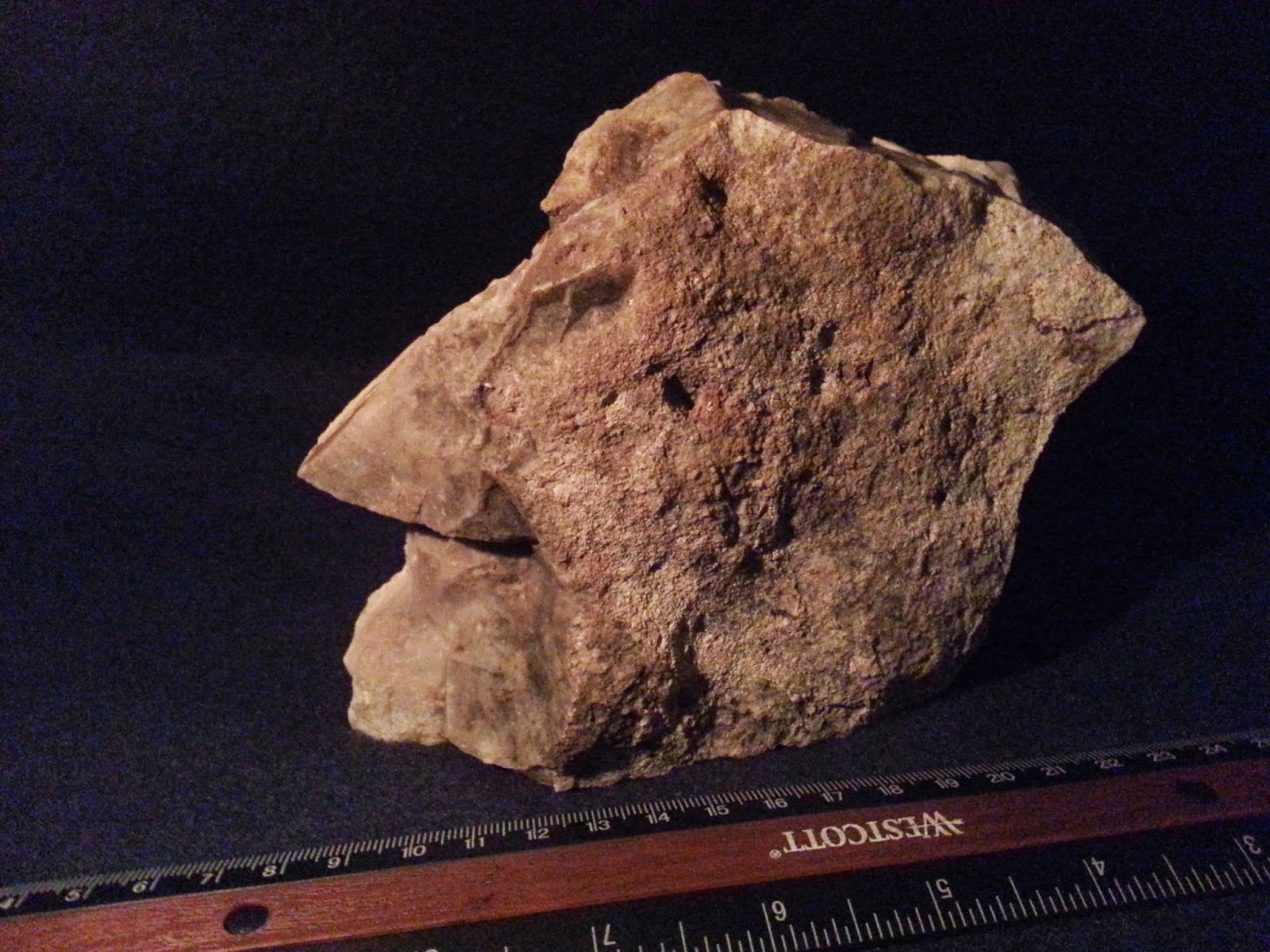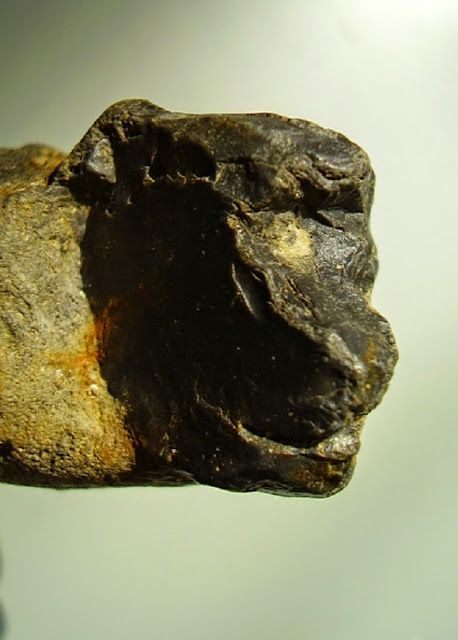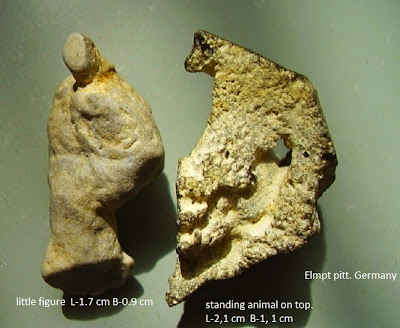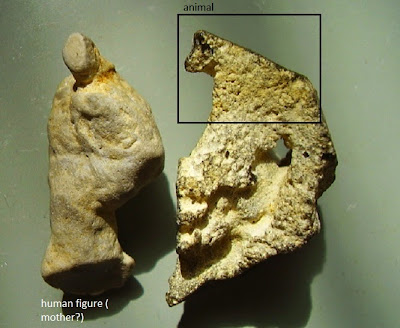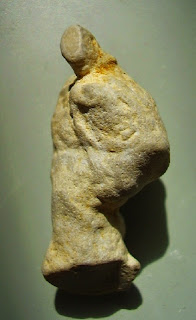"Bison, mammoth and human polyiconic sculpture"
Adam Arkfeld find, Clear Brook, Virginia
Mr. Arkfeld found this sculpture just a few feet from
the (April 3) stone interpreted as a human or human skull face mask with a mammoth cresting its forehead and with the mammoth sharing an eye with the human. This sculpture and its proximity to the first helps validate the interpretations of intention to combine human and mammoth imagery in sculpture at Arkfeld.
These two are in addition to more than a dozen such human+mammoth sculptures from this remarkable Pleistocene site located in the back yard of The Smithsonian Institution.
Over a year ago The Smithsonian in fact sent a representative to the Arkfled site who was not able to recognize the pebble tool industry artifacts there let alone art objects. Maybe because pebble tool industries are found in Asia and Siberia and Dr. Dennis Stanford is bent on an Atlantic crossing for "the first Americans," and bifacially knapped tools as the only evidence for it, The Smithsonian is biased against recognition of pebble tool industries. If so, this is to the detriment of advancement of archaeological knowledge in North America- and at taxpayers' expense!
Pebble tools, including simple hammers, choppers and awls are frequently found at productive portable rock art sites and no North American archaeologists seem capable of recognizing them but their Old World counterparts are indeed able to include them in the universe of stone technologies they study.
Isolation of the interpreted human face in the sculpture. It presents a face in right 3/4 profile perspective.
In addition to the mammoth form cresting the human forehead, this illustration demonstrates the presence of a bison head profile facing left on the posterior of the mammoth.
1) the "bumps" observed in nature on the bison shoulder and on the mammoth head are shared elements of the figures in this sculpture.
2) mammoth eye and bison eyes have been illustrated in their approximate interpreted positions to help provide visual orientation to the animals
3) like the shared mammoth and human eyes in the April 3 posting, the mammoth's trunk is also the nose of the human in this sculpture.
4) the bison head figure is sharing its "beard" with the "beard" of the human head figure.
The polyiconic combination of these three beings and the depicted visual inter-relatedness of their body elements implies a special higher level meaning for the artists who sculpted them.A Russian archaeologist on mammoth and bison combinations in Upper Paleolithic art:
"
"
- M.A. Kiriak,
Early Art of the Northern Far East: The Stone Age (Siberia), Margarita Aleksandrovna Kirʹi͡ak, 2008














.jpg)




